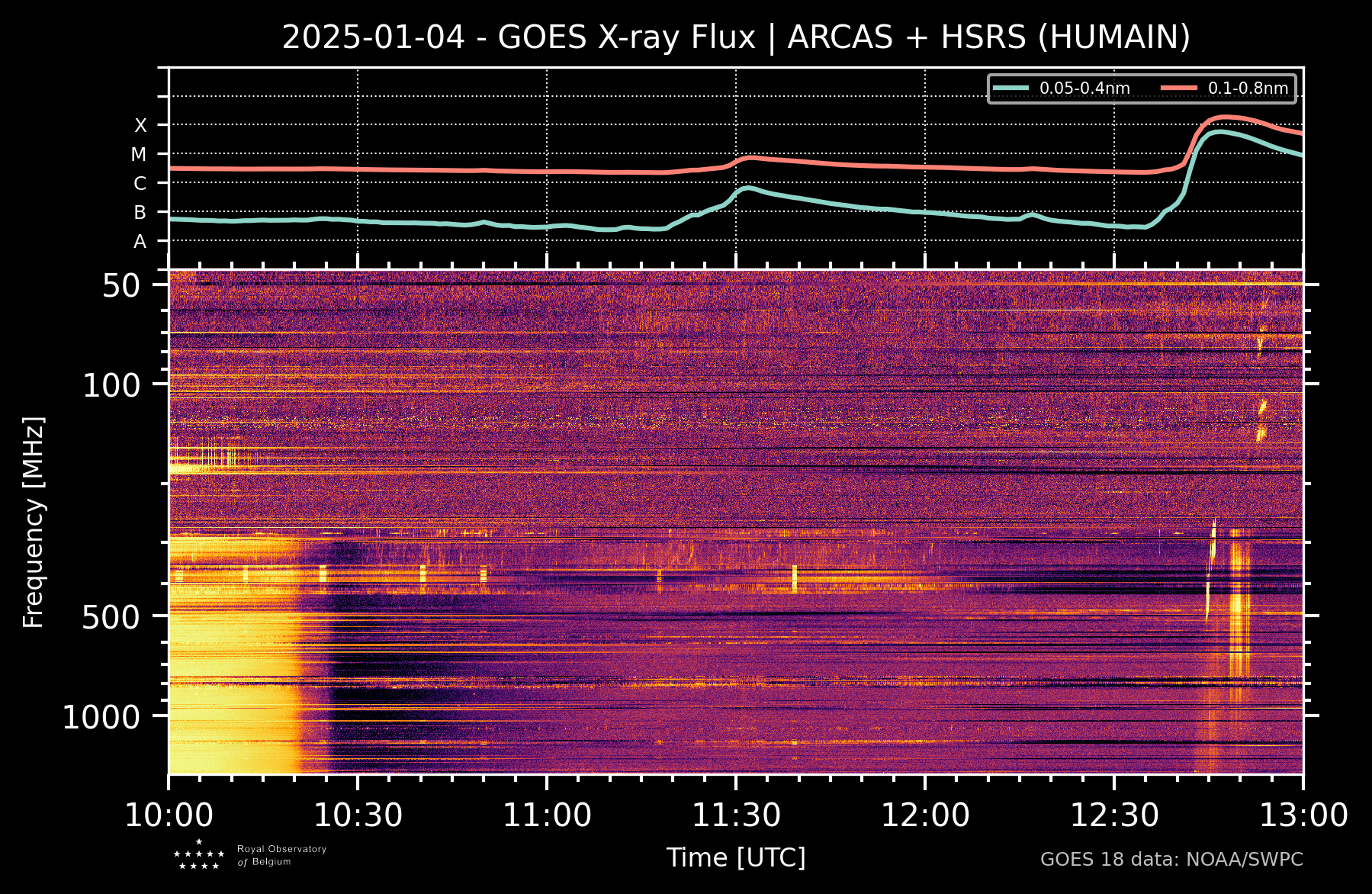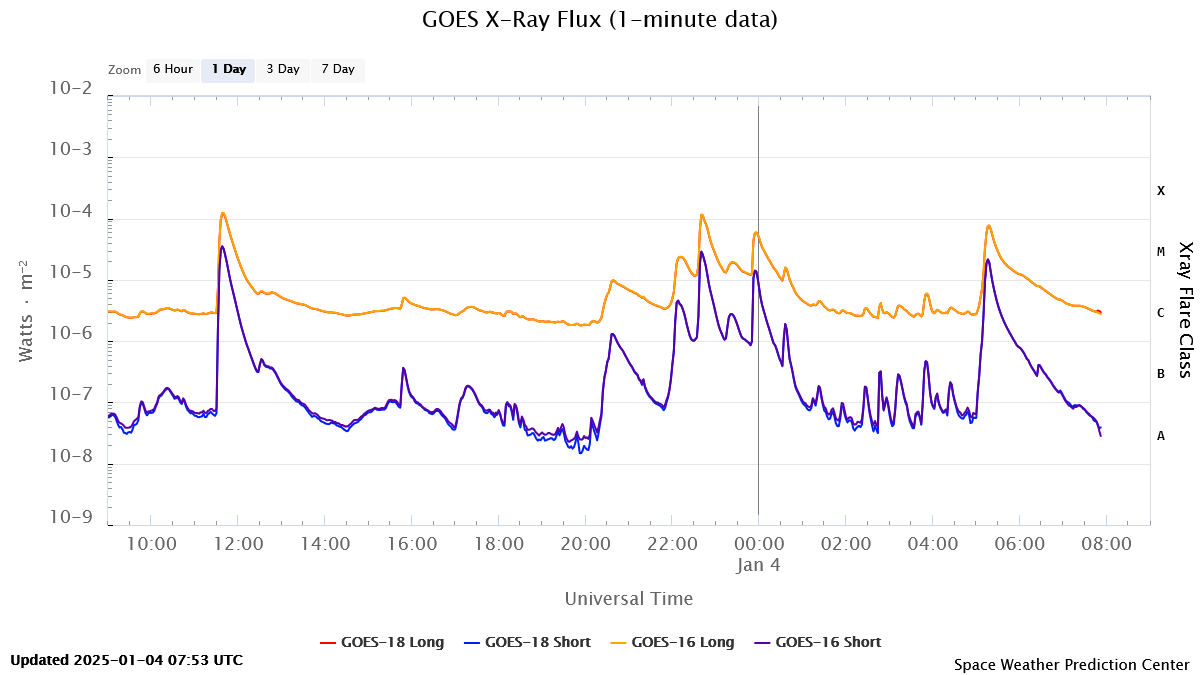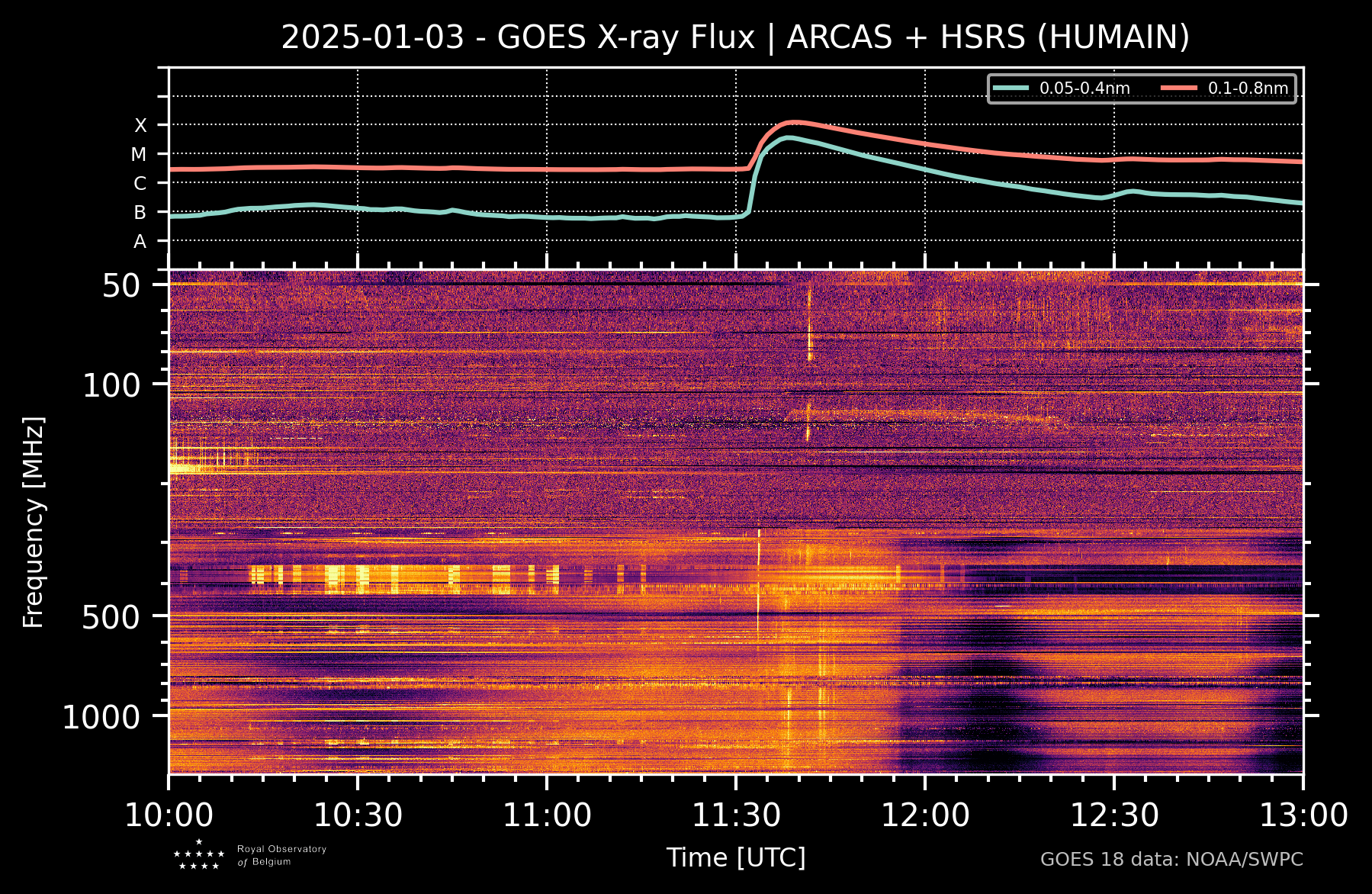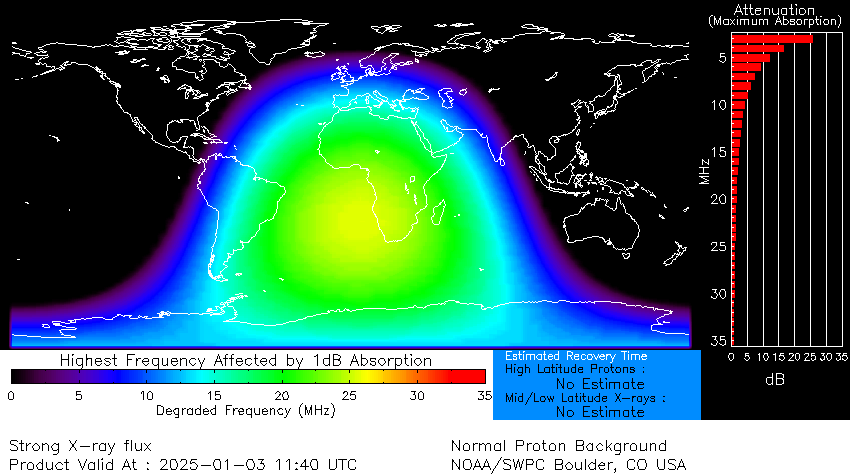UPDATE 4 January 2025 at 15:30 UTC - It's hard to keep up with NOAA 3947's X-class flare production. The most recent X-class flare (already the third!) was also the strongest (X1.8 ; GOES/SUVI 131) and peaked on 4 January at 12:48 UTC (GOES-curve). A Type II radio burst was recorded by the Humain Radioastronomy Station (Belgium; spectrogram underneath), but the forecasters at the SIDC are standing by for the availability of coronagraphic images to confirm any associated coronal mass ejection (CME). They have also (preliminary) concluded that the CME associated with the second X-class event from late on 3 January does not seem to have an earth-directed component. The greater than 10 MeV proton flux remained at background levels, well below the alert threshold of 10 pfu (GOES). The latest X-class event affected the lower frequency portion of the High Frequency communication band (HF Com ; 3-30 MHz) mainly over the southern portion of the Atlantic Ocean, Africa and South-America (D-RAP ; map). An advisory to civil aviation has been issued (PECASUS).
Further M- and X-class flares can be expected from this active region. Any associated CME may become more likely to have an earth-directed component as the active region is moving to the Sun's central meridian.
The radio spectrogram underneath shows the Type II burst on the right with the horizontal axis representing time and the vertical axis representing frequency (lowest frequencies on top). The top chart represents the evolution of the soft x-ray flux as recorded by GOES.

UPDATE 4 January 2025 at 08:30 UTC - NOAA 3947 was the source of a second X-class flare and several M-class flare eruptions (GOES-curve underneath). The X1.1 flare peaked on 3 January at 22:41 UTC. A Type II radio burst was recorded (Learmonth), and subsequently a slow-moving, moderately wide (92° according to CACTus) coronal mass ejection (CME) was observed. Standing-by for further analysis of the coronagraphic images by the SIDC forecaster. Further M- and X-class flares can be expected from this active region. The latest X-class event affected the lower frequency portion of the High Frequency communication band (HF Com ; 3-30 MHz) mainly over the Pacific Ocean, New-Zealand and the eastern portion of Australia. An advisory to civil aviation has been issued (PECASUS).

ORIGINAL 3 January 2025 - NOAA 3947, located near the northeast solar limb, was the source of an X1.2 flare that peaked 11:39UTC on 3 January. From the SIDC's PRESTO alert: "An X1.2 flare ... was recorded with peak time 11:39 UTC on 3 January. This was associated with ... NOAA Active Region 3947, which rotated onto disk over the northeast solar limb over the last day. No coronagraphic imagery is available yet to determine if there was an associated coronal mass ejection (CME). Further X-class flares remain possible from both this and other regions on the disk." The mosaic underneath shows the Sun's northeast quadrant near the time of the flare's peak in white light (upper left), the magnetogram (upper right), in H-alpha (chromosphere, lower left ; GONG), and in extreme ultraviolet (corona, lower right; GOES/SUVI 131).

The greater than 10 MeV proton flux remained at background levels, well below the alert threshold of 10 pfu (GOES). There are currently no reports of a Type II radio burst, but the Humain Radioastronomy Station in Belgium recorded nice Type III radio bursts, indicative of electron beams propagating along open magnetic field lines via the plasma emission mechanism. The radio spectrogram underneath shows the Type III burst as fine vertical lines with the horizontal axis representing time and the vertical axis representing frequency (lowest frequencies on top). The top chart represents the soft x-ray flux as recorded by GOES.

The X-class flare affected the lower frequency portion of the High Frequency communication band (HF Com ; 3-30 MHz) mainly over Africa, the southern portion of the Atlantic Ocean, and Brazil. This can be seen on the D-RAP map underneath (NOAA/SWPC). An advisory to civil aviation has been issued (PECASUS).






